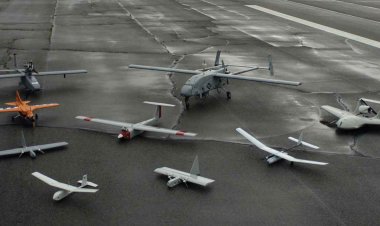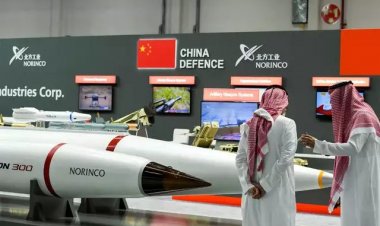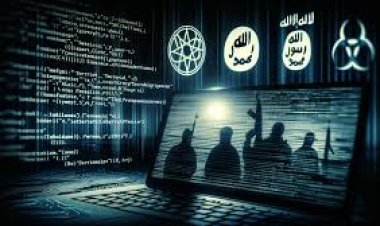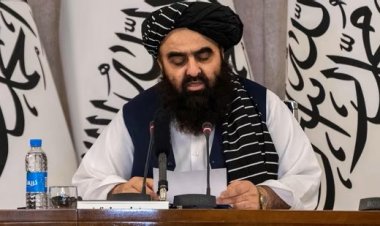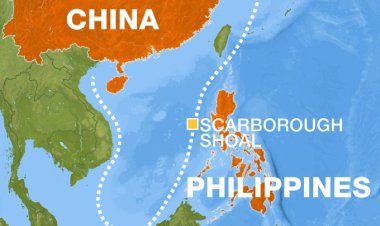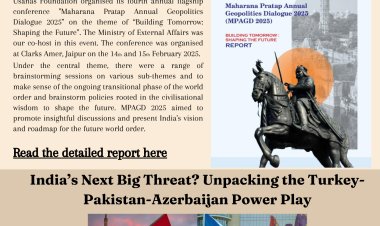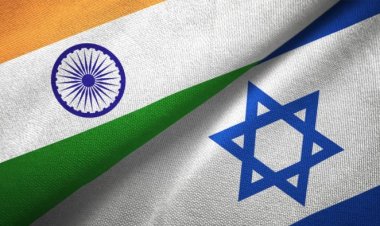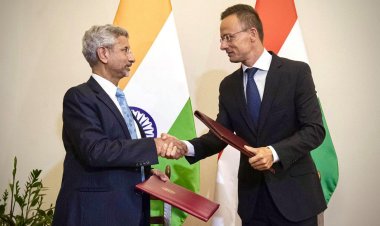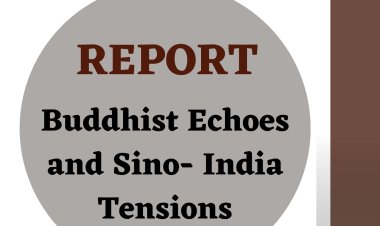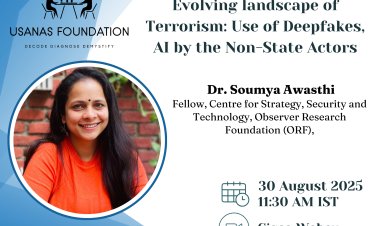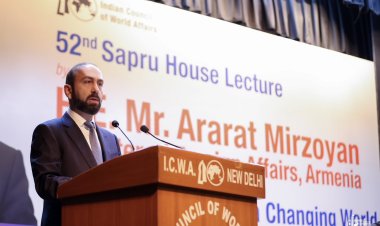New Frontiers of Terrorism- Social Media, Cyptocurrencies, and Intelligence Reforms
India needs to revamp its counter terror machinery to deal with the Challenges of Future.
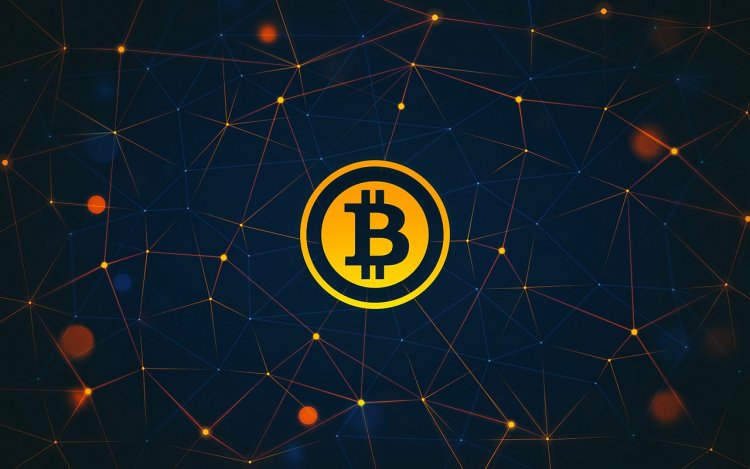
By Abhinav Pandya
India’s CT apparatus has not displayed sufficient awareness of the new frontiers of terrorism like social media and the use of cryptocurrencies in terror financing. Social media has emerged as the most lethal weapon in the overall strategy of terrorist organizations. It has been immensely useful in diverse areas such as recruitment, propaganda, the relay of instructions and generating funds. It is a well-accepted fact in the global counterterrorism community that the cyber jihad operations of ISIS played an instrumental role behind the popularity and the reach of ISIS in far-0ff countries. Further, cyber jihad provides a satisfying alternative and a pathway to Jannat (haven) to those who do not want to involve in the armed jihad.
However, CT apparatus woke up to this reality a bit late. It was a British News channel four that informed us about the ISIS recruiter Mehdi Biswas in Bangalore. In J&K social media is playing a most pernicious role in abetting stone pelters and inspiring youth to join militancy. DG Kashmir Mr. Vaid informs that when an encounter begins, more than 300 WhatsApp groups become active sending instructions, locations and other relevant details to the organizers of stone-pelting mobs. In an informal interaction the students of Kashmir University, this author was informed that the videos released by Burhani Wani and Zakir Musa have an immensely powerful appeal among the youth, an appeal that could surpass the propaganda work the 100ds of organized Jamaat-i-Islami cadres. Unfortunately, the levels of the preparedness of India’s CT apparatus are not satisfactory. In most of the states, at the district levels, this author has come across almost dysfunctional cyber security cells. They are mostly understaffed and ill-equipped, manned by a team of two-to-three constables. Their skill-sets are poor. The question is not just about the availability of resources and technology. It is more about the fact that even senior officers do not show enough concern for the cyber threats.
In the world of terror-financing, cryptocurrencies and dark-web have emerged as the matters of grave concern. With the tightening controls on the formal financial system and increasing scrutiny of hawala channels, the future terrorists are likely to use cryptocurrencies for funding terror operations. Crypto- transactions are fast, cheap, extremely-difficult-to-track and anonymous. Further, most of these activities will happen on the dark web. On Darkweb, just like any other online sales portal, one can order things. However, on dark web, one can order all kinds of contraband things like drugs, weapons, IEDs and RDX. India is at high risk because we have a huge segment of gray markets. The quality of vigil kept by regulatory agencies is outmoded, and the reach is limited, not to mention the rampant corruption that prevails. Tracking high-tech crypto-transactions and terrorist activities on the dark web will be a daunting challenge for Indian CT apparatus.
The arena of terror-funding-networks needs attention, as a part of India’s CT approach. However, off late, the focus has been increasing on the areas such as terror financing and radicalization. However, it is too little and too late. The terror funding mechanisms, even the simple ones are highly diffused, sophisticated in operations and have a strong penetration. Moreover, the agencies involved in dealing with the complexities of the terror-financing world, lack sufficient expertise in the field of terror financing.
Indian CT Apparatus is highly fragmented and poorly coordinated. In the federal set-up of India, most of the policing functions lie with the state governments. The state police are understaffed, ill-equipped and poorly trained. Further, they are heavily controlled by political masters and corruption galore. The state intelligence bodies, i.e., CIDs are almost in the state of disrepair. They are considered punishment postings and the officers posted are either incompetent or without political approach or highly corrupt. As a result, the quality of intelligence gathered is very poor, and the whole exercise is just perfunctory. This author came across many senior police officers who would hardly know a difference between Deobandis, barlewis and Ahle-Hadith. If the senior CT personnel lack such basic knowledge of the subject, then one can imagine the malaise that mars the performance of India’s CT apparatus. In one of the interaction with a senior official from Mumbai Police, this author was told that due to political pressures, they often have to turn a blind eye to increasing radicalization in the state. Intelligence briefs keep piling on for years, but there is hardly any political interest in these matters.
In the intelligence domain, multiple agencies are working on counter-terrorism. IB functions under Home Ministry, RAW and CBI report to the PM, and there are state intelligence bodies which are mentioned in brief in the previous paragraph. Terror financing and money-laundering issues are dealt with by the finance ministry. There appears a turf war-like situation between different agencies and the state and central agencies often compete for resources and bureaucratic autonomy. All this makes the task of coordination (usually done through joint committees, task forces, and multi-agency centers) and harmonization of intelligence inputs gathered by different agencies very difficult. Before 26/11 there were inputs of a sea-borne threat by central agencies, but they were largely ignored by the coast guards and the Maharashtra State police. They argued that it was not actionable intelligence. Inter-agency coordination has led to intelligence failures in the past also. 9/11 commission report pointed out the lack of inter-agency coordination as one of the causes of the intelligence failures in the September 11 attacks.
Further, our intelligence cadre needs to be upgraded regarding the theoretical understanding of terrorism and counter-terrorism and the latest technological developments in the world of terrorism. The state intelligence agencies are almost dysfunctional, and they need an urgent focus. Besides, the agencies also require a morale boost. Political leadership must ensure that they will not compromise with the core issues of national security and the feedback given by intelligence agencies will be taken seriously to determine a policy and the follow-up action. The officers can visit the UK, US, and Israel for short-term, long-term and mid-career courses in fields like terror-financing, the study of political Islam and the role of media and social media. Counterterrorism experts can be invited for lectures in India’s universities, think tanks and also the training academies of CT forces.
However, after 26/11 India has taken some remarkable initiatives which deserve due credit. National Investigative Agency set-up after Mumbai attacks have played a lynchpin role in busing terror-financing modules in Kashmir. It has emerged as a nodal agency in counterterrorism. National Counter Terrorism Center is a great innovation, but it needs to be vitalized. Expertise from academia, religious studies, the private sector, psychology, sociology, social media experts and artificial intelligence must be roped in to make it a genuinely multi-disciplinary CT agency that generates useful analytical reports. IB ran a successful operation viz. “chakravyuh” and it helped prevent many youngsters from joining ISIS. It is indeed quite surprising that despite having the world’s second largest Muslim population not more than 100 people went to join ISIS from India.
Further marking a significant departure from the past, India has changed its policy with Pakistan also. In India, a robust CT strategy can never be complete without factoring in the Pakistan question. Engaging Pakistan is quintessential. Then the question arises-which way one should do it? Previously when India exercised restraint and tried to mend fences fearing a nuclear retaliation from Pakistan, Pakistan did not relent and continued supporting proxies in Kashmir and sending Fidayeen squads in Kashmir and other parts of India. However, after the surgical strikes, one finds that Pakistan is under immense pressure to rein in the anti-terrorist groups based in Pakistan. So far, no major attack has taken place in India. Modi government’s policy of diplomatically isolating Pakistan and strengthening international pressure on Pakistan through FATF sanctions also seems to be paying dividends. In one his articles for Asia Times, this author explained that nuclear threat by Pakistan is a hoax and nukes were never an option for Pakistan. Therefore, India must adopt a tough and aggressive approach with Pakistan to strike at the roots of terrorism.
Finally, in CT operations the armed forces are fighting a battle which is hybrid in nature. For example, in a typical CASO (cordon and search operation) in Kashmir valley, army cordons a house sheltering a terrorist, on a precise intelligence input, unlike the 90s when they cordoned the entire village. When such cordons take place, WhatsApp groups become active informing about the encounter and inciting the people. The calls are given from the village mosques asking people to assemble for stone-pelting. Within minutes a mob of 7000 to 10,000 gathers. The stone pelters are controlled by CRPF, and J&K Police positioned in the outer circle. Sometimes the crowds become incredibly aggressive and violent. The forces have to use pellets. If they want, they can use AK47 but that will be disproportionate use of force and will raise many ethical questions. Cross-border actors engineer such stone-pelting processions on purpose to make a terrorist encounter appear like an instance of human rights violation by Indian security forces. Many times, the situation demands to call off the entire operation which turns out to be very demoralizing for the armed forces. Moreover, it also gives the terrorists an opportunity to escape.
These days the army has to deal with a new phenomenon of shadow militancy which is a kind of psychological warfare. In this, a terrorist named x is introduced as different individuals in different villages. So when security forces neutralize a foreign terrorist, then someone from the other village will claim that he saw the terrorist x in his village and army lacks the will and strength to kill the terrorist x. As a result, the terrorist x becomes a hero. It is profoundly demoralizing for the military.
Hence, this author would recommend that state police and paramilitary forces should be the mainstay of the CT apparatus when it comes to combat operations. The army is meant to fight a conventional war and kill a foreign enemy. They should not be made to bear the burden of the incompetence of our police forces. The J&K police is the best example to demonstrate that state police can acquire the highest levels of operational efficiency in combat operations with highly trained terrorists of Lashkar and Jaish. The state police departments and the paramilitary forces need restructuring and overhaul in areas such as command-and-control structure, discipline and the acquisitions of high-quality assault weapons and training. Further, paramilitary forces can be commanded by senior generals from the army as the nature of the operations of CRPF, BSF and SSB are akin to the military than the routing policing. Generalist IPS officers commanding units on deputations are not well accepted in the para-military forces, and the cadre-officers of para-military forces feel demoralized when they are commanded by IPS officers, most of whom hardly have any expertise in counter-terror and insurgency operations.
This author tried to contemplate upon some of the crucial aspects of robust counterterrorism policy. However, it is an extensive subject and needs exploration in detail which is not possible in the space offered by an article. To conclude, this author would like to recommend that CT requires a holistic approach. We need to strike at the roots of terrorism, and that requires out-of-the-box thinking. A sound CT policy should also think about generating gainful employment opportunities and recreational opportunities for the youth. In the long-run, an alternate narrative needs to be projected. The narrative has to focus on religious harmony, economic development, political representation, nationalism and restoring the dignity of the aggrieved populace.
Abhinav is the author of “Radiclaization in India: An Exploration.” He is a Strategic Affairs Analyst with an extensive counter-terrorism experience in Kashmir. He is also the founder and CEO of Usanas Foundation.
Disclaimer: The paper is the author’s individual scholastic articulation and the facts and figures quoted are duly referenced, as needed, and are believed to be correct.
The article was originally published by HW News.

